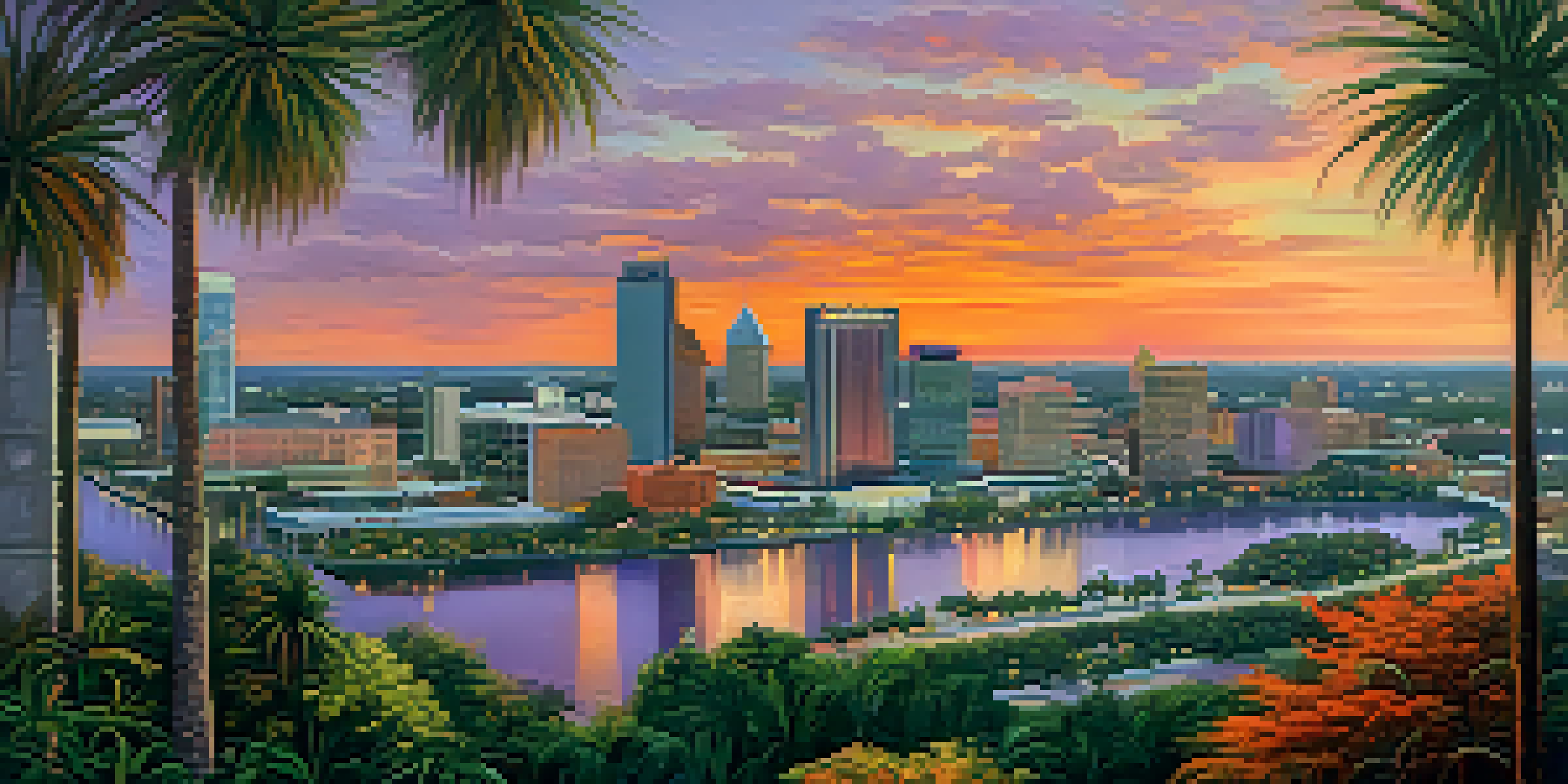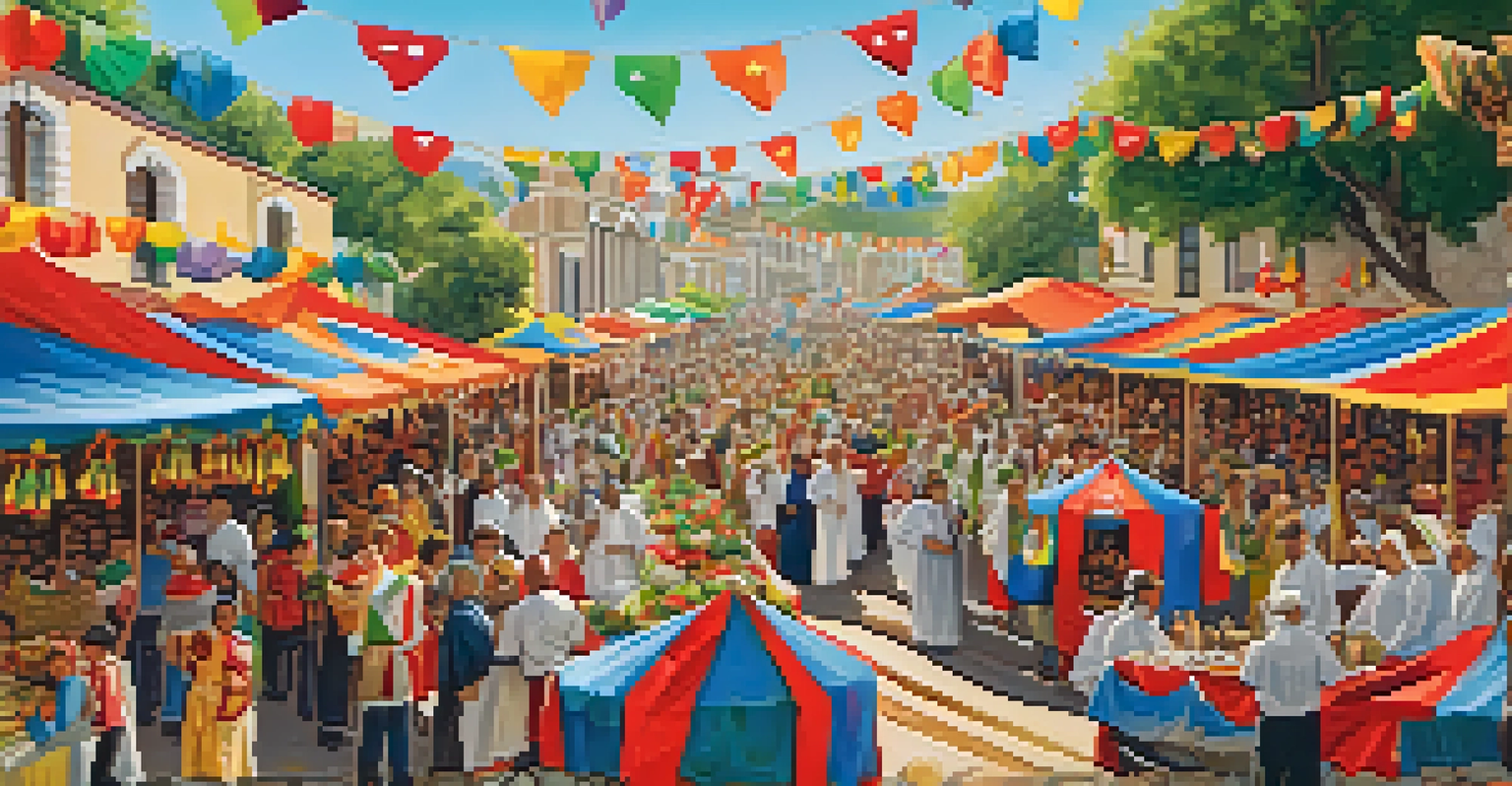The Influence of Religion on Tampa's Cultural Diversity

Understanding Tampa's Religious Landscape
Tampa is a vibrant city with a rich tapestry of religious beliefs. From Christianity to Buddhism, the diverse faiths reflect the city's welcoming nature. This mixture of religions shapes the community's identity, influencing everything from festivals to daily practices.
Diversity is not a reason for division but rather a source of strength.
Major religious groups, including Catholics, Protestants, and a growing number of non-Christian faiths, coexist harmoniously. This interfaith dialogue fosters mutual respect and understanding, creating a unique cultural atmosphere. As Tampa continues to grow, so does its religious diversity, enhancing the city's character.
The presence of various houses of worship, from grand cathedrals to intimate temples, adds to the city's beauty. Each religious site serves as a reminder of Tampa's multicultural roots, inviting residents and visitors alike to appreciate the city’s spiritual richness.
Historical Influences on Religious Diversity
The history of Tampa is deeply intertwined with its religious diversity. Spanish settlers brought Catholicism to the region, establishing a foundation for many cultural practices. As waves of immigrants arrived, they carried their faith traditions, enriching the community's spiritual landscape.

The establishment of neighborhoods often reflected the predominant religions of their residents. For example, the Ybor City area is known for its influence from Cuban and Italian immigrants, who brought their Catholic faith. This historical layering of beliefs has created a unique blend of cultures that still thrive today.
Tampa's Religious Diversity Explained
The city's rich tapestry of faiths shapes its identity and cultural practices.
Understanding this historical context helps us appreciate Tampa's current religious diversity. Each faith contributes to the city’s story, showcasing how religion has shaped the social fabric over time. This shared history serves as a foundation for unity in diversity.
Religious Festivals and Their Cultural Impact
Religious festivals in Tampa are a vibrant expression of cultural diversity. Events like the Gasparilla Festival and the Festival of the Holy Spirit showcase the city's rich traditions. These gatherings not only celebrate faith but also invite people of all backgrounds to participate and learn.
Faith is a journey, not a destination, and every step enriches our understanding of each other.
Each festival offers a glimpse into the beliefs and customs of various groups. For instance, the Festival of the Holy Spirit features Portuguese traditions, while the Gasparilla Festival highlights local legends with a festive flair. Such celebrations foster community spirit and encourage inclusivity.
These events are more than just celebrations; they are opportunities for cultural exchange. Residents and visitors experience firsthand the beauty of different traditions, from food to music. This sharing of experiences strengthens the bonds within the community.
Interfaith Dialogue and Community Building
Tampa's religious organizations often engage in interfaith dialogue, fostering understanding and collaboration. Programs that encourage discussions between different faiths promote harmony and reduce misconceptions. This effort is crucial in a diverse city where respect for one another's beliefs is paramount.
Community events, such as joint prayer services or charity drives, demonstrate the power of interfaith cooperation. These gatherings not only address social issues but also create lasting friendships among participants. Such initiatives highlight the values that many religions share, including compassion and service.
Interfaith Dialogue Enhances Unity
Community efforts in interfaith dialogue promote understanding and collaboration among diverse beliefs.
By embracing interfaith dialogue, Tampa showcases a model for other cities to follow. This commitment to understanding and cooperation enhances the city's cultural fabric, making it a more united community. Together, residents work towards common goals, proving that diversity can be a source of strength.
The Role of Religion in Education and Youth
Religious institutions play a significant role in the education sector in Tampa. Many schools, both public and private, incorporate religious teachings into their curricula. This integration helps shape students' values and moral frameworks, guiding them as they grow.
Youth programs organized by various religious groups offer opportunities for young people to engage with their faith. These programs often focus on community service, leadership development, and social justice initiatives. Such experiences empower youth to make positive contributions to society.
By nurturing a sense of community and purpose, these religious educational initiatives help mold the next generation. Students learn to appreciate diverse perspectives, fostering a more inclusive worldview. This commitment to education highlights the lasting influence of religion on Tampa's youth.
Religious Architecture as Cultural Symbols
Tampa's skyline is punctuated by diverse religious architecture, each telling a story of its community. From the stunning Basilica of St. Lawrence to the serene Tampa Bay Buddhist Temple, these structures reflect the city’s rich spiritual heritage. Their architectural styles often embody the cultural nuances of the faith they represent.
These religious buildings serve as gathering places, but they also stand as symbols of unity in diversity. Each site invites curiosity and respect, encouraging exploration of different beliefs. This architectural diversity enhances the cultural landscape, making Tampa a visually and spiritually rich environment.
Future Trends in Spirituality
Tampa is seeing a rise in non-traditional faith groups, reflecting broader trends toward innovative spiritual practices.
Visitors to Tampa often find themselves drawn to these unique structures, which can spark conversations about faith and culture. The stories behind these places of worship highlight the city's commitment to honoring its multifaceted identity. In this way, religious architecture becomes a bridge between communities.
Future Trends in Tampa's Religious Diversity
As Tampa continues to evolve, so too will its religious landscape. The city is witnessing an increase in non-traditional faith groups, reflecting broader national trends. This shift suggests a growing interest in spirituality beyond established religions, contributing to an even richer cultural diversity.
Younger generations are exploring spirituality in unique ways, often blending practices from multiple traditions. This fusion reflects a desire for inclusivity and personal expression. As these new movements gain traction, Tampa may become a hub for innovative spiritual practices.

The future of Tampa's religious diversity promises to be dynamic and exciting. As the city embraces new faith expressions, it will continue to strengthen its cultural identity. This ongoing evolution underscores the importance of open-mindedness and adaptability in a multicultural society.